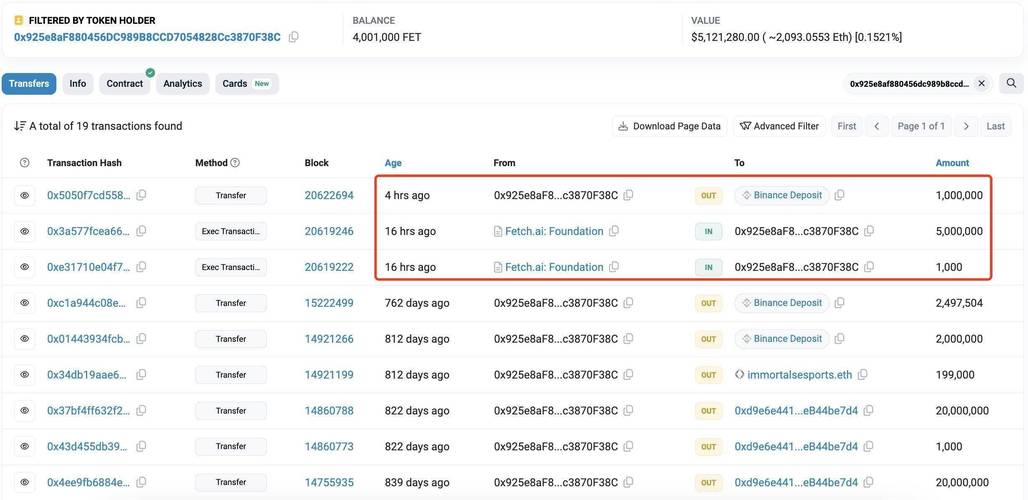Understanding Binance ETH Charts: A Comprehensive Guide for You
When it comes to trading Ethereum on Binance, having a deep understanding of the charts is crucial. These charts provide you with a visual representation of the market’s movements, helping you make informed decisions. In this article, we will delve into the various aspects of Binance ETH charts, ensuring you have a comprehensive understanding of how to interpret them effectively.
Understanding the Basics
Binance ETH charts are designed to display the price movements of Ethereum over a specific period. They come in different formats, such as line charts, candlestick charts, and bar charts. Each format offers unique insights into the market’s behavior. Let’s explore these formats in detail.

Line Charts
Line charts are the simplest form of Binance ETH charts. They connect the closing prices of Ethereum over a specific period, forming a line. This format is useful for getting a general idea of the market’s trend. However, it lacks the detailed information provided by other chart types.
Candlestick Charts
Candlestick charts are widely used by traders due to their ability to provide a wealth of information. Each candlestick represents a specific time period, such as one minute, one hour, or one day. The body of the candlestick shows the opening and closing prices, while the wicks represent the highest and lowest prices during that period. This format allows you to identify trends, support and resistance levels, and potential reversal points.

Bar Charts
Bar charts are similar to candlestick charts but use bars instead of candlesticks. Each bar represents a specific time period, and the bars’ width can be adjusted based on your preference. Bar charts are useful for analyzing price movements and identifying patterns, such as doji, hammers, and engulfing patterns.
Interpreting Price Patterns
Understanding price patterns is essential for making informed trading decisions. Here are some common price patterns you should be aware of:
Support and Resistance
Support and resistance levels are critical price points where the market has repeatedly failed to move beyond. Support levels are where the price has found a floor, while resistance levels are where the price has encountered a ceiling. Identifying these levels can help you determine potential entry and exit points.
Trend Lines
Trend lines are drawn by connecting the highs or lows of a price chart. They help identify the direction of the market’s movement. Uptrend lines are drawn by connecting higher highs, while downtrend lines are drawn by connecting lower highs. Trend lines can be used to identify potential breakouts or breakdowns.
Chart Patterns
Chart patterns, such as head and shoulders, triangles, and flags, provide valuable insights into the market’s behavior. These patterns can indicate potential reversals or continuations of the current trend. Familiarizing yourself with these patterns can help you anticipate market movements.
Using Indicators
Technical indicators are tools that help you analyze price charts and make trading decisions. Here are some popular indicators you should consider:
Volume
Volume indicates the number of Ethereum units being traded over a specific period. High volume often indicates significant market interest, while low volume may suggest a lack of interest. Analyzing volume can help you identify potential breakouts or reversals.
Relative Strength Index (RSI)
The RSI is a momentum oscillator that measures the speed and change of price movements. It ranges from 0 to 100 and is used to identify overbought or oversold conditions. An RSI above 70 indicates an overbought condition, while an RSI below 30 indicates an oversold condition.
Moving Averages
Moving averages are used to smooth out price data and identify trends. They come in various time frames, such as 50-day, 100-day, and 200-day moving averages. Traders often use moving averages to identify potential entry and exit points.
Conclusion
Understanding Binance ETH charts is essential for successful trading. By familiarizing yourself with the different chart formats, price patterns, and technical indicators, you can make informed decisions and increase your chances of success. Remember to practice and refine your skills, as the cryptocurrency market is highly dynamic and unpredictable.
| Chart Format | Description |
|---|





